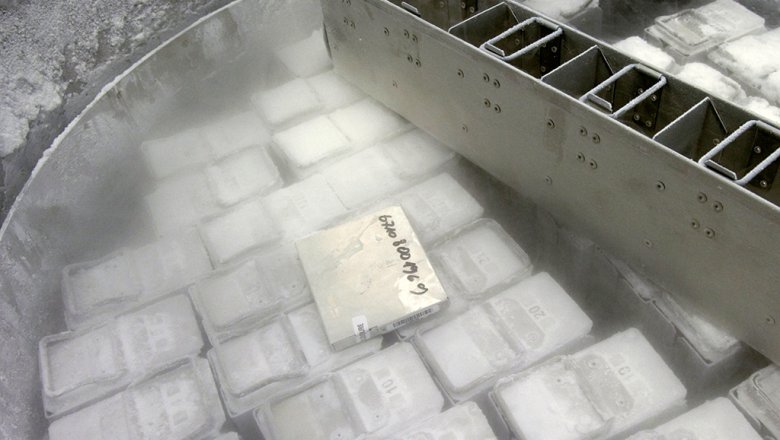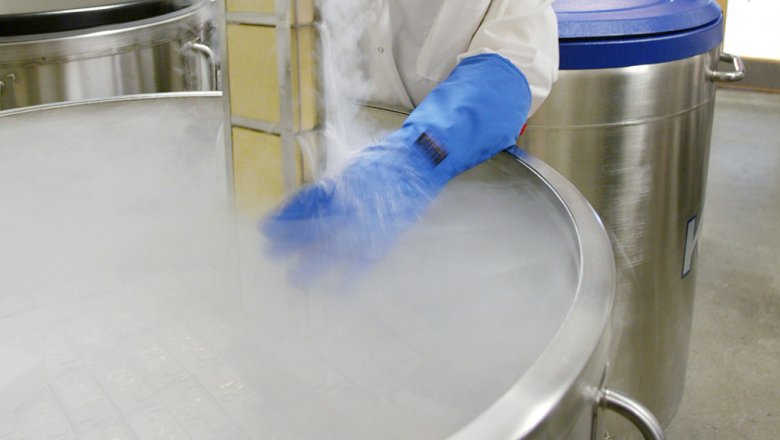Life after death: what happens to the body during cryopreservation
14-year-old British woman shortly before his death from cancer bequeathed to freeze his body in hopes that someday in the future scientists will bring her back to life. But what cryonics is and whether scientists successfully revive the dead?

This week it became known that the 14-year-old British woman shortly before his death from cancer bequeathed to freeze his body in hopes that someday in the future scientists will bring her back to life.
Companies involved in cryogenic preservation of the bodies, still exist only in Russia and the United States, however, people for whom a cryogenic freeze part of their life plan, it becomes more worldwide, and particularly in Britain.
The technology of freezing of the human body or its parts is called cryonics, and to some extent already used in modern medicine for freezing and storage at ultralow temperatures, blood cells, bone marrow, sperm or embryos.
However, the storage and subsequent “revival” of the deceased person is a very distant prospect, to achieve that we will have to make a scientific breakthrough.
How is it really?
Director of store tissues and cells in the University of Bristol, John Armitage believed that in science it is impossible to predict with absolute probability, but so far there is little indication that such things will indeed become a reality.
It’s one thing to take a piece of cloth of a healthy person to use in the future, and quite another to successfully freeze a deceased person together with the whole complex structure of the brain and then “reactivate,” he says.
“What are the chances that there will be no damage? We haven’t even reached the stage of cryopreservation of whole organs, but to do it with the body is a very complex task,” says Professor Armitage.
Human bodies have a complex intracellular structure, they contain different cells and blood vessels, and this will need to be protected from damage during freezing and keep constant.
Barry fuller, Professor of surgery and cryopreservation from University College London says that the first step in this direction is to demonstrate in practice that human bodies can be subjected to cryostat for subsequent transplantation, however at the moment this is not possible.
“That’s why we have to say that until we have objective evidence that the human body can “survive” cryopreservation so that all cells will function normally after thawing,” explains the scientist.

How does cryopreservation
What happens to the bodies of those who decided after the death to put himself in cryopreservation? First of all, it is necessary to act immediately, which in Britain, for example, there is a special group of volunteers from the nonprofit organization Cryonics UK, which freezes the body and arrange for its transportation to the country where it will be kept.
Currently at this initial stage, dry ice is used.
When the body is in storage, it is filled with cryoprotectant solution (like antifreeze) to prevent ice crystals that can form cracks and damage. Then placing the body in liquid nitrogen, the temperature is gradually reduced until extremely low, minus 130C.
Such low temperatures are needed in order to allow cells to survive the loss of moisture after death, so the process of cristata very complicated.
The ultimate goal of this procedure in the future to unfreeze and revitalize the body, but how real is this prospect with any certainty one thing is not taken.
Several hundred people have already paid for the procedure cristata of his body in three existing “laboratory farms” in the United States and Russia, however, the waiting list totals up to 1,250 people.
Cryonics UK has already helped 10 wishing to set up this whole complicated process.

“Sons think we are crazy
Chrissie de Rivaz from the English County of Cornwall, as her husband John, has 28 thousand pounds (about 35 thousand dollars), so her body was frozen after death. Together with the payment for the carriage of their bodies in USA the total cost of this procedure is for both of them 65 thousand pounds (80 million dollars).
“The idea came up to my husband — says 76-year-old Chrissy. — He talked a lot about this, and at first I thought, ugh, this is terrible, didn’t want to know about it. But he gave me some reading to do on this subject, and when I penetrated, I thought that it’s not so horrible. In fact, they very carefully treat their patients. It all started 25 years ago and I have since signed up for.”
Chrissie de Rivaz does not intend to agitate all and believes that it’s a private matter, but for her the issue is resolved.
“I don’t see any reason why I need the stove to send, and the thought of being buried, I am not attracted to, so why not take the opportunity to return, she says. — I know the chances are small, but as long as you live, still not enough, so isn’t it beautiful again to live?”.
What people think about this her family?
“We have three sons, and they think we’re nuts. But we are not discouraged, because I know this is what we want,” explains Chrissie.
If the revival of a person after cryopreservation will become a reality, Chrissie de Rivaz enthusiastically looks to the future.
“I hope that they will be able to revive John, but otherwise I [after recovery] will not be one of your friends. But if not, I think I would still be interested to live — just out of pure curiosity. We are so much interested in history and archaeology, and interest in the future will be even stronger.”
“I would like to live much longer, and now I have a chance,” said de Rivaz.